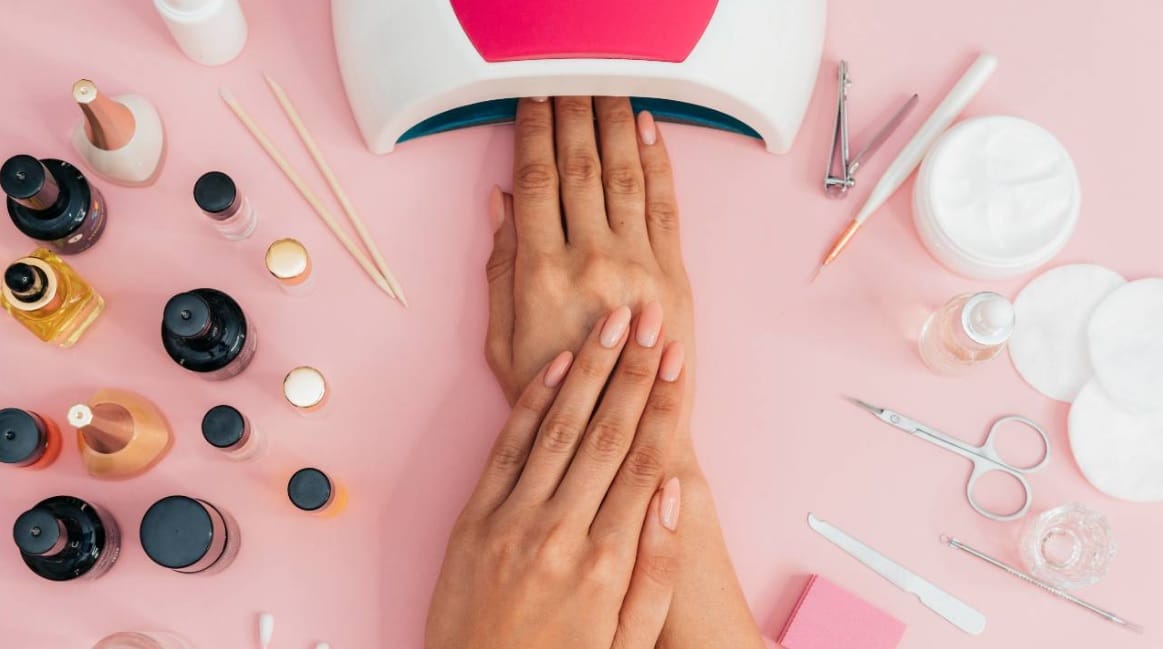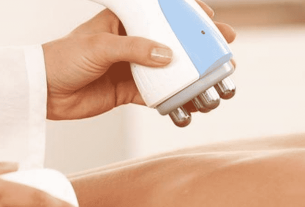We will introduce you to the main types of nail extensions, as well as additional information about them. Check out:
O nail extensionas the name suggests, is a procedure used to increase the size of nails. Therefore, it is a great option for those who like big nails but cannot wait for them to grow long enough, or who have difficulty strengthening their natural nails.
This type of procedure can be done in several ways, with different materials and techniques. Which is great, since each method has its peculiarities and advantages, as well as the duration, which can vary greatly from one stretch to the next.
Anyway, below we will introduce you to the main types of nail extensions, how they are done and their advantages. As well as additional information for those interested in joining the procedure.
What are the types of nail extensions?
1. Fiberglass
To begin with, we have fiberglass nail extensions, which are one of the most resistant options of all. It is very suitable for manual work, or even for those who work with typing. Furthermore, the result of fiberglass is very natural, as its layers are not too thick.
In fact, this option is highly recommended for people who have various allergies. Another benefit is that the material guarantees excellent durability, even for months, requiring only periodic maintenance..
To make fiber gel nails, the manicurist glues the fiber filaments onto the nail. The fiber is then fixed with the gel and finally taken to a light cabinet for drying. Then just paint or do the nail art of your choice.
2. Acrylic
Nail extensions done with acrylic are one of the oldest of all, and also one of the most popular out there. In this method, the manicurist will glue the artificial nail tips onto the natural nail tips. This way, the professional will dip a brush into the acrylic liquid. And then it is placed in an acrylic powder and applied to both the natural nail and the artificial tip, which is why the result is so uniform.
The main advantage of acrylic is that this technique does not require a drying cabinet, as the result is the most rigid of all. Therefore, a person can stay with acrylic nails for up to 8 months, of course, maintaining them regularly.
3. Gel
Another type of nail extension that is a big hit in beauty salons is gel nail extensions. In this method, a base gel is applied to the nail. Once this is done, layers of silicone gel are placed, which facilitates the construction and modeling of the stretch.
After that, you need to dry your nails in a light booth and finish with a top coat to seal the extension. So, as it is an elastic material, this method provides the nail with a very natural curvature that is free from the risk of displacement. Furthermore, the material is also hypoallergenic and the prosthesis is permanent, and requires maintenance twice a month.
4. Polygel
In the case of polygel nail extensions, it is done by combining acrylic powder and gel, which is already available ready to use. Therefore, the difference is that the product is not liquid like gel and does not dry on its own like acrylic, and therefore it is easier to mold into the shape the customer chooses until drying, which is less likely to break.
On the other hand, this technique is one that provides less durability, around 25 days and does not require maintenance, but when necessary it is necessary to remove the product and re-apply it.
5. Porcelain
In the case of porcelain, liquid acrylic with powder is also used. However, the difference between the two techniques is that in porcelain the tone of white is even lighter, while in acrylic the tone is pinkish and transparent.
Furthermore, this type of nail extension does not require gluing artificial nails. This way, the manicurist uses molds underneath the nail, which makes it easier to make the mold. In general, porcelain nails tend to be very resistant and have excellent durability and, like most extensions, they also require maintenance every 20 days.
6. Tips
In this method, called Tips, we use plastic false nails as a base. Therefore, depending on the skills of the chosen manicurist, it is possible to combine this technique with gel or porcelain nails. Therefore, the big difference in this combination is the difference in the value of the material used. This is because nails that are shaped exclusively with porcelain end up being more expensive than those made with tips and a porcelain coating.
7. Mold
Finally, another very common type of nail extension is the mold, which is made from paper and customized according to the client’s wishes, fitting the natural nail. This way, it has a natural nail shape, and therefore provides a very delicate result.
In fact, the mold can be used with all types of materials used for stretching. However, the durability of the technique depends on the material used together.
What precautions should you take with nail extensions?
First of all, it is important to pay attention to the necessary care when stretching your nails.. So pay attention to these tips:
First of all, choose a professional you trust and who has professional courses and experience in this type of procedure. So, don’t be afraid to ask for recommendations or talk to someone who has already undergone the procedure. At this same point, it is also important to pay attention to the cleanliness of the environment, to avoid any risk of catching an infection.
As for the products and materials used, it is also a good idea to check the expiration date and try to use disposable materials that are safer.
Have you decided which nail extension you are going to do? Therefore, before anything else, try to keep your natural nails strong and healthy before stretching. Furthermore, it is important to maintain your cuticles to protect your natural nails after stretching.
Finally, after stretching, it is highly recommended to avoid exposure to water and chemicals. Therefore, to ensure the durability of the procedure, it is best to wear gloves when doing anything involving these products.
How to remove nail extensions?
It is not recommended to remove the stretch alone at home. The ideal is to carry out maintenance, preferably with the same manicurist who performed the technique. So, if you want to remove the stretching, it is a good idea to ask the same professional to remove it using the correct products for each material.
For example, to remove acrylic, a different product is used than the fiber. Therefore, this care is very important for the health of your natural nails. Therefore, never try to rip off the nail, the corners or even the cuticle with your teeth. Also, avoid putting your nail in your mouth to avoid the risk of swallowing a piece of the material.
Are there any contraindications for nail extensions?
Yes, although it seems very simple, not everyone is able to do nail extensions. Firstly, it is essential that your natural nails are healthy, with no injuries to the ends.
Other than that, this type of technique is not recommended for pregnant women, people with diabetes or people under 16 years of age. As well as patients undergoing cancer treatment and people with ringworm. Finally, people with fragile nails or those who are allergic to the products used in this type of procedure should also avoid it to avoid further inconvenience.
So, what did you think of these options? Take the opportunity to also check out how to do nail extensions with table salt.
Sources: Protection for Beaty Capricho Women’s Tips Steal The Look

Sign up for our newsletter and stay up to date with exclusive news
that can transform your routine!
Warning: Undefined array key "title" in /home/storelat/public_html/wp-content/plugins/link-whisper-premium/templates/frontend/related-posts.php on line 12
Warning: Undefined array key "title_tag" in /home/storelat/public_html/wp-content/plugins/link-whisper-premium/templates/frontend/related-posts.php on line 13




